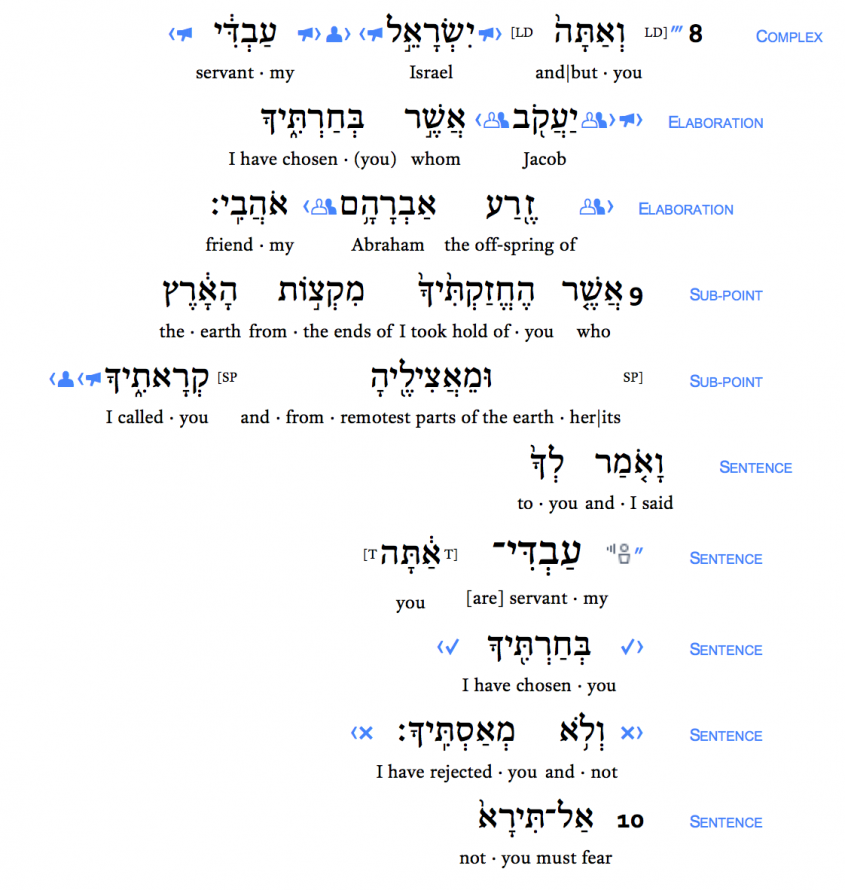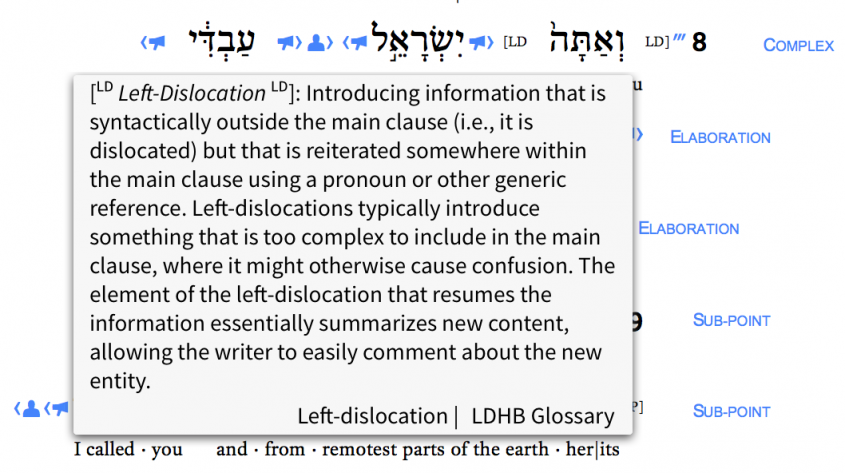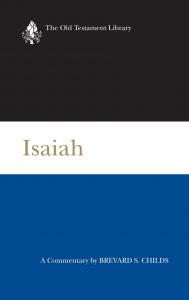Did you know that God is a name-caller? That Yahweh identifies people with derogatory terms? This is nowhere more evident than in the Old Testament Prophets.
The Insult
Isaiah 41 is a chapter in which the God of Israel takes the nations to trial. He comes at them with full force in the first four verses (ESV):
Listen to me in silence, O coastlands;
let the peoples renew their strength;
let them approach, then let them speak;
let us together draw near for judgment.
Who stirred up one from the east
whom victory meets at every step?
He gives up nations before him,
so that he tramples kings underfoot;
he makes them like dust with his sword,
like driven stubble with his bow.
He pursues them and passes on safely,
by paths his feet have not trod.
Who has performed and done this,
calling the generations from the beginning?
I, the LORD, the first,
and with the last; I am he.
Then from verses 5–7 the trial turns to nothing short of taunting, as noted by Brevard Child’s in his commentary on Isaiah.1 Yahweh characterizes the nations as frantic fools who look to idols for defense, though these idols themselves cannot stand on their own—they must be nailed down!
The coastlands have seen and are afraid;
the ends of the earth tremble;
they have drawn near and come.
Everyone helps his neighbor
and says to his brother, “Be strong!”
The craftsman strengthens the goldsmith,
and he who smooths with the hammer him who strikes the anvil,
saying of the soldering, “It is good”;
and they strengthen it with nails so that it cannot be moved.
Yet just as abruptly as the language turns aggressive, a host of discourse features interrupt the flow and redirect the discourse into more soothing terms.
The Comfort
From verses 8–9 the God of Israel paints a glowing picture of what he thinks about his people. And only after he fleshes out this portrait does he instruct them on how to respond to his arrival.

Left-dislocation
The Hebrew pronoun אַתָּה (you) is part of a construction called “left-dislocation” (see image below), which in this context calls attention to a shift in the discourse: previously God was discussing the nations and their response to his coming, but now he moves on to Israel and the response he expects from them.2

Although the first term is less significant and merely functions to arrest attention, the ones that follow are increasingly more robust recharacterizations:
יִשְׂרָאֵ֣ל (Israel)
עַבְדִּ֔י (My servant)
יַעֲקֹ֖ב (Jacob)
אֲשֶׁ֣ר בְּחַרְתִּ֑יךָ (you whom I have chosen)
זֶ֖רַע אַבְרָהָ֥ם (offspring of Abraham)
אֹהֲבִֽי׃ (My friend)
אֲשֶׁ֤ר הֶחֱזַקְתִּ֙יךָ֙ מִקְצ֣וֹת הָאָ֔רֶץ (you whom I grasped from the ends of the earth)
וּמֵאֲצִילֶ֖יהָ קְרָאתִ֑י (and called from its remotest parts)
To catch the full significance of this montage of expressions it must be noted that none of the eight are necessary to make sense of God’s command in verse 10: “Fear not, for I am with you”.
Every one of these characterizations could have been omitted and still the instruction to not fear would be intelligible, both in terms of who is being addressed (i.e., Israel) and what God wants them to do (i.e., avoid succumbing to fear).
Overspecification and Changed Reference
In discourse terms, we are looking at multiple cases of “overspecification” and “changed reference.” Here are two brief definitions:
1. Overspecification: A description of individuals or ideas that is more specific than required to identify the intended referent. This extra information is often thematically loaded and prompts the reader to think about the referent in a specific way.
2. Changed Reference: the use of a different expression to refer to an established participant in order to recharacterize or highlight thematically important information about that participant in the discourse.
So why did God say these things? It becomes immediately apparent that every piece of prefacing information serves some other purpose. This purpose can be summed up in one word: assurance.
The Assurance
Although the nations respond to God’s coming with panic, God is quick to assure Israel they have no need to respond in this way. They are “Israel” and “Jacob”, not the nations; they are God’s servants and friends, not his enemies; they are sought after, chosen, and called by God; they share a specially privileged ancestor.
In short, Israel is everything the trembling nations are not.
But true to life, sometimes when fear or insecurities are pulsing, we don’t hear the truth as we ought to. Yet the God of Israel knows our frame. He continues by affirming once more how he cherishes his people:
Why Discourse Matters
It’s true that much of this interpretive work might be gleaned from a slow and careful reading of the text, without an awareness of such discourse labels as “overspecification” and “changed reference.”
However, applying models of discourse grammar, like what’s found in the Lexham Discourse resources, illuminates many of the devices we already intuitively perceive. That illumination enables identification, leading to appreciation and finally articulation of the routes biblical authors chose to take to get their point across.
In the case of Isaiah 41, the total effect of all these discourse devices and the content they embody testify to the relentless devotion God has for his people—so much so, that by affirming his benevolent relationship with Israel, God removes every reason to fear before commanding them not to.
And that, undoubtably, is an assurance the church can grasp today, thanks to God’s demonstration of love and devotion to Israel long ago, and not so long ago in Christ.

Are you new to discourse analysis, or ready to take your exegesis to the next level? Then you need to check out the exceptional, pioneering works authored by the scholars at Logos, including Kris Lyle’s Lexham Discourse Handbooks on Colossians and James, and the unprecedented 15-volume Lexham Discourse Bundle with datasets.
- Childs, Brevard S. Isaiah: A Commentary. Edited by William P. Brown, Carol A. Newsom, and Brent A. Strawn. 1st ed. The Old Testament Library. Louisville, KY: Westminster John Knox Press, 2001.
- A note for the nerdiest of nerds: While this construction is typically used to introduce a referent that is not very accessible in the minds of the addressee (in order that it might be activated as a topic or focal constituent in the main clause), in this instance the left-dislocated constituent is highly accessible and thus serves another purpose: that of creating a discontinuity in the discourse. In other words by using a device that is typically used to introduce a new participant for re-introducing an old one, the reader is jarred with a construction that requires more processing than seems called for—or what Givon (1976:153) calls an “over-use of discourse machinery”.










